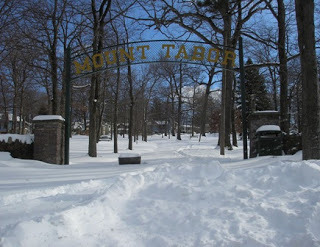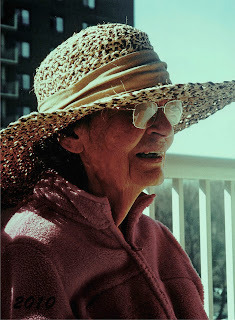David Lender's Blog, page 3
December 8, 2013
Rudiger – The Prequels
About 18 months ago I wrote a short story, Rudiger, and a blog about it, Mark Knopfler, Rüdiger and Me (read it here), that introduced the character of John Rudiger, fugitive financier. I titled the story and created John Rudiger based on emotions evoked by a song called "Rüdiger" by Mark Knopfler (See Knopfler perform it here.) In Rudiger, John Rudiger is living under an alias in Antigua. He ran off with close to $100 million from his hedge fund and is now down to his last $2 million. Katie Dolan, a lawyer with the U.S. Attorney's Office in New York, is sent to Antigua to try to get enough evidence to extradite Rudiger back to the U.S. to stand trial. Rudiger recruits her to help him retrieve $50 million of bearer bonds from a safe deposit box in New York.
Since then I’ve gotten to know Rudiger better, including writing a novel about Rudiger’s exploits after the Rudiger short story, which is finished but still in editing process. I’ve also released two short stories and a novella that are prequels to the Rudiger short story. The short stories are Rudiger Comes Alive and Rudiger in the Islands. The novella is Rudiger in Peril.
 Click on cover to buy on AmazonIn Rudiger Comes Alive, hotshot Wall Streeter Walter Conklin is a wunderkind hedge fund manager who runs a $1 billion technology fund. He’s on a roll until his CFO cooks the books to overstate their results to raise more money. The only way out for Conklin is to insist his CFO keep cooking them until he can equal those returns. But the Feds are on to him, so Conklin needs to act fast before they can throw him in jail—just as the NASDAQ crashes from its historic highs. In the end, Conklin needs to come to terms with the markets, his smart-mouthed wife, and Charlie Holden, Assistant U.S. Attorney in New York.
Click on cover to buy on AmazonIn Rudiger Comes Alive, hotshot Wall Streeter Walter Conklin is a wunderkind hedge fund manager who runs a $1 billion technology fund. He’s on a roll until his CFO cooks the books to overstate their results to raise more money. The only way out for Conklin is to insist his CFO keep cooking them until he can equal those returns. But the Feds are on to him, so Conklin needs to act fast before they can throw him in jail—just as the NASDAQ crashes from its historic highs. In the end, Conklin needs to come to terms with the markets, his smart-mouthed wife, and Charlie Holden, Assistant U.S. Attorney in New York.
Rudiger Comes Aliveis a 13,000 word short story, chronologically the first of the Rudiger stories.
Read a sample of Rudiger Comes Alive
Buy Rudiger Comes Alive: Buy US Buy UK
 Click on cover to buy on AmazonIn Rudiger in the Islands, Rudiger adopts Antigua as his new home: he’s building a house and settling in to the islands way of life. Then Charlie Holden, Assistant U.S. Attorney in New York, gets a tip and sends one of his staff lawyers down to get the goods on Rudiger and extradite him to stand trial. In order to outwit Holden and his man, Rudiger needs to establish his credentials as an Antiguan national, so he enlists the help of the double-dealing local police—who will sell their allegiance to the highest bidder. Rudiger is forced to think on the fly to adapt to the machinations of both parties as he improvises to try to stay out of jail.
Click on cover to buy on AmazonIn Rudiger in the Islands, Rudiger adopts Antigua as his new home: he’s building a house and settling in to the islands way of life. Then Charlie Holden, Assistant U.S. Attorney in New York, gets a tip and sends one of his staff lawyers down to get the goods on Rudiger and extradite him to stand trial. In order to outwit Holden and his man, Rudiger needs to establish his credentials as an Antiguan national, so he enlists the help of the double-dealing local police—who will sell their allegiance to the highest bidder. Rudiger is forced to think on the fly to adapt to the machinations of both parties as he improvises to try to stay out of jail.
Rudiger in the Islands is a 20,000 word short story, chronologically the second of the Rudiger stories.
Read a sample of Rudiger in the Islands
Buy Rudiger in the Islands: Buy US Buy UK
 Click on cover to buy on AmazonIn Rudiger in Peril, Rudiger has settled into Antigua as his new home. He gets a surprising phone call from Charlie Holden, Assistant U.S. Attorney in New York, who’s been trying to extradite Rudiger back to the U.S. to stand trial. Holden tells Rudiger his former partner and CFO has been murdered in the U.S. by one of Rudiger’s hedge fund investors who lost millions and is out for revenge. And the investor’s hired killer is now in Antigua stalking Rudiger. Rudiger is forced to align himself with Holden as an unlikely ally as he tries to figure out which of his investors could be after him and help Holden stop him—before the hitman catches up with Rudiger.
Click on cover to buy on AmazonIn Rudiger in Peril, Rudiger has settled into Antigua as his new home. He gets a surprising phone call from Charlie Holden, Assistant U.S. Attorney in New York, who’s been trying to extradite Rudiger back to the U.S. to stand trial. Holden tells Rudiger his former partner and CFO has been murdered in the U.S. by one of Rudiger’s hedge fund investors who lost millions and is out for revenge. And the investor’s hired killer is now in Antigua stalking Rudiger. Rudiger is forced to align himself with Holden as an unlikely ally as he tries to figure out which of his investors could be after him and help Holden stop him—before the hitman catches up with Rudiger.
Rudiger in Peril is a 28,000 word novella, chronologically the third of the Rudiger stories.
Read a sample of Rudiger in Peril
Buy Rudiger in Peril: Buy US Buy UK
 Click on cover to buy on AmazonIn Rudiger, John Rudiger is now a long-term fugitive financier who's been living under his alias in Antigua for 10 years. He's down to his last $2 million. Katie Dolan, a lawyer with the U.S. Attorney's Office in New York, is sent to Antigua to try to get enough evidence to extradite Rudiger back to the U.S. to stand trial. Rudiger recruits her to help him retrieve $50 million of bearer bonds from a safe deposit box in New York.
Click on cover to buy on AmazonIn Rudiger, John Rudiger is now a long-term fugitive financier who's been living under his alias in Antigua for 10 years. He's down to his last $2 million. Katie Dolan, a lawyer with the U.S. Attorney's Office in New York, is sent to Antigua to try to get enough evidence to extradite Rudiger back to the U.S. to stand trial. Rudiger recruits her to help him retrieve $50 million of bearer bonds from a safe deposit box in New York.
Katie is no dope, and neither is Rudiger, and each one has to figure out who's scamming who as they work their plan to sneak the bonds out from under the nose of Charlie Holden, Katie's boss, the Assistant U.S. Attorney in New York, who's wise to both of them.
Rudiger is a 10,000 word short story, chronologically the fourth of the Rudiger stories.
Read a sample of Rudiger
Buy Rudiger: Buy US Buy UK
Visit David Lender’s Website
Since then I’ve gotten to know Rudiger better, including writing a novel about Rudiger’s exploits after the Rudiger short story, which is finished but still in editing process. I’ve also released two short stories and a novella that are prequels to the Rudiger short story. The short stories are Rudiger Comes Alive and Rudiger in the Islands. The novella is Rudiger in Peril.
 Click on cover to buy on AmazonIn Rudiger Comes Alive, hotshot Wall Streeter Walter Conklin is a wunderkind hedge fund manager who runs a $1 billion technology fund. He’s on a roll until his CFO cooks the books to overstate their results to raise more money. The only way out for Conklin is to insist his CFO keep cooking them until he can equal those returns. But the Feds are on to him, so Conklin needs to act fast before they can throw him in jail—just as the NASDAQ crashes from its historic highs. In the end, Conklin needs to come to terms with the markets, his smart-mouthed wife, and Charlie Holden, Assistant U.S. Attorney in New York.
Click on cover to buy on AmazonIn Rudiger Comes Alive, hotshot Wall Streeter Walter Conklin is a wunderkind hedge fund manager who runs a $1 billion technology fund. He’s on a roll until his CFO cooks the books to overstate their results to raise more money. The only way out for Conklin is to insist his CFO keep cooking them until he can equal those returns. But the Feds are on to him, so Conklin needs to act fast before they can throw him in jail—just as the NASDAQ crashes from its historic highs. In the end, Conklin needs to come to terms with the markets, his smart-mouthed wife, and Charlie Holden, Assistant U.S. Attorney in New York.Rudiger Comes Aliveis a 13,000 word short story, chronologically the first of the Rudiger stories.
Read a sample of Rudiger Comes Alive
Buy Rudiger Comes Alive: Buy US Buy UK
 Click on cover to buy on AmazonIn Rudiger in the Islands, Rudiger adopts Antigua as his new home: he’s building a house and settling in to the islands way of life. Then Charlie Holden, Assistant U.S. Attorney in New York, gets a tip and sends one of his staff lawyers down to get the goods on Rudiger and extradite him to stand trial. In order to outwit Holden and his man, Rudiger needs to establish his credentials as an Antiguan national, so he enlists the help of the double-dealing local police—who will sell their allegiance to the highest bidder. Rudiger is forced to think on the fly to adapt to the machinations of both parties as he improvises to try to stay out of jail.
Click on cover to buy on AmazonIn Rudiger in the Islands, Rudiger adopts Antigua as his new home: he’s building a house and settling in to the islands way of life. Then Charlie Holden, Assistant U.S. Attorney in New York, gets a tip and sends one of his staff lawyers down to get the goods on Rudiger and extradite him to stand trial. In order to outwit Holden and his man, Rudiger needs to establish his credentials as an Antiguan national, so he enlists the help of the double-dealing local police—who will sell their allegiance to the highest bidder. Rudiger is forced to think on the fly to adapt to the machinations of both parties as he improvises to try to stay out of jail.Rudiger in the Islands is a 20,000 word short story, chronologically the second of the Rudiger stories.
Read a sample of Rudiger in the Islands
Buy Rudiger in the Islands: Buy US Buy UK
 Click on cover to buy on AmazonIn Rudiger in Peril, Rudiger has settled into Antigua as his new home. He gets a surprising phone call from Charlie Holden, Assistant U.S. Attorney in New York, who’s been trying to extradite Rudiger back to the U.S. to stand trial. Holden tells Rudiger his former partner and CFO has been murdered in the U.S. by one of Rudiger’s hedge fund investors who lost millions and is out for revenge. And the investor’s hired killer is now in Antigua stalking Rudiger. Rudiger is forced to align himself with Holden as an unlikely ally as he tries to figure out which of his investors could be after him and help Holden stop him—before the hitman catches up with Rudiger.
Click on cover to buy on AmazonIn Rudiger in Peril, Rudiger has settled into Antigua as his new home. He gets a surprising phone call from Charlie Holden, Assistant U.S. Attorney in New York, who’s been trying to extradite Rudiger back to the U.S. to stand trial. Holden tells Rudiger his former partner and CFO has been murdered in the U.S. by one of Rudiger’s hedge fund investors who lost millions and is out for revenge. And the investor’s hired killer is now in Antigua stalking Rudiger. Rudiger is forced to align himself with Holden as an unlikely ally as he tries to figure out which of his investors could be after him and help Holden stop him—before the hitman catches up with Rudiger.Rudiger in Peril is a 28,000 word novella, chronologically the third of the Rudiger stories.
Read a sample of Rudiger in Peril
Buy Rudiger in Peril: Buy US Buy UK
 Click on cover to buy on AmazonIn Rudiger, John Rudiger is now a long-term fugitive financier who's been living under his alias in Antigua for 10 years. He's down to his last $2 million. Katie Dolan, a lawyer with the U.S. Attorney's Office in New York, is sent to Antigua to try to get enough evidence to extradite Rudiger back to the U.S. to stand trial. Rudiger recruits her to help him retrieve $50 million of bearer bonds from a safe deposit box in New York.
Click on cover to buy on AmazonIn Rudiger, John Rudiger is now a long-term fugitive financier who's been living under his alias in Antigua for 10 years. He's down to his last $2 million. Katie Dolan, a lawyer with the U.S. Attorney's Office in New York, is sent to Antigua to try to get enough evidence to extradite Rudiger back to the U.S. to stand trial. Rudiger recruits her to help him retrieve $50 million of bearer bonds from a safe deposit box in New York.Katie is no dope, and neither is Rudiger, and each one has to figure out who's scamming who as they work their plan to sneak the bonds out from under the nose of Charlie Holden, Katie's boss, the Assistant U.S. Attorney in New York, who's wise to both of them.
Rudiger is a 10,000 word short story, chronologically the fourth of the Rudiger stories.
Read a sample of Rudiger
Buy Rudiger: Buy US Buy UK
Visit David Lender’s Website
Published on December 08, 2013 15:47
Rudiger Comes Alive – The Prequel
About 18 months ago I wrote a short story, Rudiger, and a blog about it, Mark Knopfler, Rüdiger and Me (read it here), that introduced the character of John Rudiger, fugitive financier. In Rudiger, John Rudiger is living under an alias in Antigua. He ran off with close to $100 million from his hedge fund and is now down to his last $2 million. Katie Dolan, a lawyer with the U.S. Attorney's Office in New York, is sent to Antigua to try to get enough evidence to extradite Rudiger back to the U.S. to stand trial. Rudiger recruits her to help him retrieve $50 million of bearer bonds from a safe deposit box in New York.
Since then I’ve gotten to know Rudiger better, including writing a novel about Rudiger’s exploits after the Rudiger short story, which is still in process. I’ve also just released a new short story that’s a prequel to the Rudiger short story called Rudiger Comes Alive.
 Click on cover to buy on AmazonIn Rudiger Comes Alive, hotshot Wall Streeter Walter Conklin is a wunderkind hedge fund manager who runs a $1 billion technology fund. He’s on a roll until his CFO cooks the books to overstate their results to raise more money. The only way out for Conklin is to insist his CFO keep cooking them until he can equal those returns. But the Feds are on to him, so Conklin needs to act fast before they can throw him in jail—just as the NASDAQ crashes from its historic highs. In the end, Conklin needs to come to terms with the markets, his smart-mouthed wife, and Charlie Holden, Assistant U.S. Attorney in New York.
Click on cover to buy on AmazonIn Rudiger Comes Alive, hotshot Wall Streeter Walter Conklin is a wunderkind hedge fund manager who runs a $1 billion technology fund. He’s on a roll until his CFO cooks the books to overstate their results to raise more money. The only way out for Conklin is to insist his CFO keep cooking them until he can equal those returns. But the Feds are on to him, so Conklin needs to act fast before they can throw him in jail—just as the NASDAQ crashes from its historic highs. In the end, Conklin needs to come to terms with the markets, his smart-mouthed wife, and Charlie Holden, Assistant U.S. Attorney in New York.
Rudiger Comes Aliveand Rudiger are part of my White Collar Crime Series. I hope you’ll give them a try. If you read Rudiger first, it won’t spoil Rudiger Comes Alive for you.
Rudiger Comes Aliveis a 13,000 word short story, chronologically the first of the Rudiger stories.
Read a sample of Rudiger Comes Alive
Buy Rudiger Comes Alive: Buy US Buy UK
 Click on cover to buy on Amazon
Click on cover to buy on Amazon
Rudiger is a 10,000 word short story, chronologically the second of the Rudiger stories.
Read a sample of Rudiger
Buy Rudiger: Buy US Buy UK
Visit David Lender’s Website
Since then I’ve gotten to know Rudiger better, including writing a novel about Rudiger’s exploits after the Rudiger short story, which is still in process. I’ve also just released a new short story that’s a prequel to the Rudiger short story called Rudiger Comes Alive.
 Click on cover to buy on AmazonIn Rudiger Comes Alive, hotshot Wall Streeter Walter Conklin is a wunderkind hedge fund manager who runs a $1 billion technology fund. He’s on a roll until his CFO cooks the books to overstate their results to raise more money. The only way out for Conklin is to insist his CFO keep cooking them until he can equal those returns. But the Feds are on to him, so Conklin needs to act fast before they can throw him in jail—just as the NASDAQ crashes from its historic highs. In the end, Conklin needs to come to terms with the markets, his smart-mouthed wife, and Charlie Holden, Assistant U.S. Attorney in New York.
Click on cover to buy on AmazonIn Rudiger Comes Alive, hotshot Wall Streeter Walter Conklin is a wunderkind hedge fund manager who runs a $1 billion technology fund. He’s on a roll until his CFO cooks the books to overstate their results to raise more money. The only way out for Conklin is to insist his CFO keep cooking them until he can equal those returns. But the Feds are on to him, so Conklin needs to act fast before they can throw him in jail—just as the NASDAQ crashes from its historic highs. In the end, Conklin needs to come to terms with the markets, his smart-mouthed wife, and Charlie Holden, Assistant U.S. Attorney in New York.Rudiger Comes Aliveand Rudiger are part of my White Collar Crime Series. I hope you’ll give them a try. If you read Rudiger first, it won’t spoil Rudiger Comes Alive for you.
Rudiger Comes Aliveis a 13,000 word short story, chronologically the first of the Rudiger stories.
Read a sample of Rudiger Comes Alive
Buy Rudiger Comes Alive: Buy US Buy UK
 Click on cover to buy on Amazon
Click on cover to buy on Amazon
Rudiger is a 10,000 word short story, chronologically the second of the Rudiger stories.
Read a sample of Rudiger
Buy Rudiger: Buy US Buy UK
Visit David Lender’s Website
Published on December 08, 2013 15:47
March 18, 2013
Styles' Petfinder Post
I found Styles, our 2 1/2 year old adopted pitbull's, original Petfinder post yesterday when I was clearing out some old bookmarked links. He was five months old at the time, living in a rescue shelter. His picture made me laugh as much as it did when I first saw it; because of that I insisted we meet him even though our original reason for going to the shelter was to see another puppy.
After I rediscovered the link I emailed it to Manette and Zac, who read it on their iPhones while in the car. They both got choked up. Here it is:

If you can't read it in the JPEG I inserted, the text is:
"What can we say about Styles??!!! He is just the life of the party and a little ham. This is a pup that you just have to meet. He is so sweet, playful, eager to please, and so much fun to be around. This little guy is just loving life. He is housebroken, dog friendly (although he needs a dog that can handle rough play). He is 100% social and ready to see the world. He is very eager to please and learn. He attends a weekly obedience class where he is handled by teenagers and has a blast."
I had forgotten what the post said, but whoever wrote it left out the part about bed-hogging, obsession with balls, and having only two speeds--flat out and asleep--but aside from that they had him pegged.
At this point none of us can imagine our life without him. Thank God for rescue shelters.
After I rediscovered the link I emailed it to Manette and Zac, who read it on their iPhones while in the car. They both got choked up. Here it is:

If you can't read it in the JPEG I inserted, the text is:
"What can we say about Styles??!!! He is just the life of the party and a little ham. This is a pup that you just have to meet. He is so sweet, playful, eager to please, and so much fun to be around. This little guy is just loving life. He is housebroken, dog friendly (although he needs a dog that can handle rough play). He is 100% social and ready to see the world. He is very eager to please and learn. He attends a weekly obedience class where he is handled by teenagers and has a blast."
I had forgotten what the post said, but whoever wrote it left out the part about bed-hogging, obsession with balls, and having only two speeds--flat out and asleep--but aside from that they had him pegged.
At this point none of us can imagine our life without him. Thank God for rescue shelters.
Published on March 18, 2013 08:12
January 21, 2013
Arab Summer - A New Sasha Del Mira Thriller
 My new thriller, Arab Summer, is about an Arab Spring uprising in Saudi Arabia led by fundamentalist Shiite Muslims whose goal is to topple the Sunni Saudi regime and use its oil riches to hold the West hostage. It's the next in the Sasha Del Mira series. Sasha, the heroine of Trojan Horse and Sasha Returns, is a former concubine to the Saudi royal family who was recruited by the CIA as an informant, and later as an assassin.The uprisings in Tunisia, Libya and Egypt that brought down Ben Ali, Qaddafi and Mubarak—dictators who brutally persecuted, repressed and murdered their citizens—started Arab Spring in 2011. Since then, over a dozen other Arab states have witnessed at least some level of civil unrest challenging their governments, including the ongoing civil war in Syria between the al-Assad regime and opposition forces. The darker side of the Arab Spring movement has recently surfaced in the form of murderous acts by Islamic fundamentalists, not against repressive governments, but against innocents. Islamic militants now control approximately one-third of Mali and are aggressively moving to take the entire country. Armed Islamic fundamentalists recently organized the takeover of an international oil and gas facility in Algeria that resulted in the deaths of over 35 hostages, including Americans and Europeans. Saudi Arabia is considered one of the most stable regimes in the Arab states, but the notion of an Arab Spring uprising there isn't so far-fetched. Protests, some with 70,000 participants, over anti-Shiite discrimination, labor rights, release of prisoners held without charge or trial, and for equal representation in key government offices began in Saudi Arabia in 2011 and continue today.Imagine this: a group of disaffected Shiite Muslim extremists seizes the Grand Mosque in Mecca—Islam’s holiest site—during the final days of the Hajj, the annual Muslim holy pilgrimage, and take thousands of hostages. Their leader says that among them is the Mahdi, the prophesied “Redeemer of Islam” who will drive out all infidels from holy Saudi soil and lead Muslims into a new era. They broadcast their demands from loudspeakers on the mosque’s minarets, including ceasing oil exports to the US and the expulsion of foreign civilians and military personnel from Saudi Arabia. Saudi forces try unsuccessfully for weeks to retake the mosque, sustaining heavy casualties. The Saudis ultimately enlist the help of foreign military forces to drive out the militants.That actually happened in 1979.In Arab Summer something like that does again. Saif Ibn Mohammed al-Aziz, a ruthless terrorist, leads a Muslim fundamentalist group bent on a bloody coup of the Saudi Arabian government via an Arab Spring uprising. As a prelude to his plan, he has Sasha Del Mira’s husband, Daniel, murdered. Sasha comes out of retirement to avenge Daniel’s death and to help Tom Goddard, her old mentor at the CIA, stop the plot, putting her face to face with Saif, her former ally—and lover.
My new thriller, Arab Summer, is about an Arab Spring uprising in Saudi Arabia led by fundamentalist Shiite Muslims whose goal is to topple the Sunni Saudi regime and use its oil riches to hold the West hostage. It's the next in the Sasha Del Mira series. Sasha, the heroine of Trojan Horse and Sasha Returns, is a former concubine to the Saudi royal family who was recruited by the CIA as an informant, and later as an assassin.The uprisings in Tunisia, Libya and Egypt that brought down Ben Ali, Qaddafi and Mubarak—dictators who brutally persecuted, repressed and murdered their citizens—started Arab Spring in 2011. Since then, over a dozen other Arab states have witnessed at least some level of civil unrest challenging their governments, including the ongoing civil war in Syria between the al-Assad regime and opposition forces. The darker side of the Arab Spring movement has recently surfaced in the form of murderous acts by Islamic fundamentalists, not against repressive governments, but against innocents. Islamic militants now control approximately one-third of Mali and are aggressively moving to take the entire country. Armed Islamic fundamentalists recently organized the takeover of an international oil and gas facility in Algeria that resulted in the deaths of over 35 hostages, including Americans and Europeans. Saudi Arabia is considered one of the most stable regimes in the Arab states, but the notion of an Arab Spring uprising there isn't so far-fetched. Protests, some with 70,000 participants, over anti-Shiite discrimination, labor rights, release of prisoners held without charge or trial, and for equal representation in key government offices began in Saudi Arabia in 2011 and continue today.Imagine this: a group of disaffected Shiite Muslim extremists seizes the Grand Mosque in Mecca—Islam’s holiest site—during the final days of the Hajj, the annual Muslim holy pilgrimage, and take thousands of hostages. Their leader says that among them is the Mahdi, the prophesied “Redeemer of Islam” who will drive out all infidels from holy Saudi soil and lead Muslims into a new era. They broadcast their demands from loudspeakers on the mosque’s minarets, including ceasing oil exports to the US and the expulsion of foreign civilians and military personnel from Saudi Arabia. Saudi forces try unsuccessfully for weeks to retake the mosque, sustaining heavy casualties. The Saudis ultimately enlist the help of foreign military forces to drive out the militants.That actually happened in 1979.In Arab Summer something like that does again. Saif Ibn Mohammed al-Aziz, a ruthless terrorist, leads a Muslim fundamentalist group bent on a bloody coup of the Saudi Arabian government via an Arab Spring uprising. As a prelude to his plan, he has Sasha Del Mira’s husband, Daniel, murdered. Sasha comes out of retirement to avenge Daniel’s death and to help Tom Goddard, her old mentor at the CIA, stop the plot, putting her face to face with Saif, her former ally—and lover.The Sasha Del Mira Series:
 Arab Summer - A novel
Arab Summer - A novel
 Sasha Returns - A Short Story
Sasha Returns - A Short Story
 Trojan Horse - A Novel
Trojan Horse - A Novel
Published on January 21, 2013 17:17
December 16, 2012
Victorian Christmas
Every year or so during the Christmas season, I try to return to the small town of Mt. Tabor in northern New Jersey where I grew up. Not only does it bring back memories from my childhood, but the town itself hasn't changed much since the Victorian era, so it’s like walking into a Victorian Christmas.
 Mt. Tabor, NJ
Mt. Tabor, NJMt. Tabor was founded in 1869 by the Methodist church as one of two camp meeting grounds in New Jersey for outdoor summer religious retreats. The Methodist faithful would pitch tents and camp out in either Mt. Tabor or Ocean Grove for the month of August to study the Bible, attend revival meetings, and hear sermons and religious lectures. In time, the revelers built cottages on the 16’ x 25' tent lots and Mt. Tabor soon became a summer resort. Eventually the cottages were winterized, which led to a year-round community. Many of the original cottages still exist today. Homes in the old section of town are covered with Victorian filigree, trim and railings and many are still painted with bold complementary colors true to the Victorian era.
Mt. Tabor is still a hilltop community of about 1,000 people with beautiful wooded streets, 15 MPH speed limits, its own nine-hole golf course—the former farm of Stephan Dickerson, who sold the property to the Methodists in 1869 and whose descendants still live in town—basketball courts, a playground, a baseball diamond and Mt. Tabor School, to which I walked across town as a child, as do the children today. It was a special place, and still is.
But for most of us, the Christmas season was the most special. Christmas decorations were a tradition in town; not the Santa Claus and reindeer variety, but white and multi-colored lights adorning the angular peaks, gingerbread and railings of the Victorian homes. There was no rulebook that said you had to participate, but almost every household did its part to decorate the town.
In our family, trimming the outside of the house was as much an annual ritual as decorating the Christmas tree. We’d march up to the attic and bring down all the lights, then crawl under the porch to drag out the ladder. Dad would direct us to our stations, then climb the ladder and my three brothers and I would feed the strings of lights along like a bucket brigade, Paul, the youngest behind me, Jon ahead of me, and Mark, the oldest, a "big kid" with his feet two rungs up on the ladder. By the time we got back inside hours later, the house was warm from the fire and Mom had Andy Williams, Burl Ives and Tony Bennett singing Christmas songs on the record player. The house smelled like fireplace smoke, pine from the Christmas tree, and cinnamon and cloves from the hot mulled cider Mom had ready for us. After a snack and Christmas cookies with the hot cider, we'd tackle decorating the Christmas tree.
I'm sure it didn't snow for some Christmases, although my memory is a blank for those, as I always remember walking around town on snow-covered streets with my family to take in the lights, and to participate in groups of Christmas carolers performing for the neighbors. It had an aura of something from Charles Dickens’ era: the crunch of snow underfoot, Oh Come All Ye Faithful wafting from a few blocks away from another group of carolers, and our noses and fingers stinging from the cold air. I always half expected to see Scrooge, after his evening transformation by the ghosts, with Tiny Tim beside him, walk around the corner.
On those caroling evenings we were frequently invited inside for hot chocolate by the neighbors. Maybe people would think that's corny today, but it still goes on.
Another tradition was sledding (we called it “sleigh riding”) and tobogganing on the golf course. The fourth green, sacred ground that couldn’t be tread upon by kids in summer, was always made available to us in winter as a perfect launching pad for our rides. You could even find Chas Fouquet, the most obsessive golfer in town, helping to give our sleds that initial push across the expanse of the green to build up speed for a breathtaking run down the hill to the long slope of the third fairway. There was also a rite of passage at about the fifth or sixth grade that advanced you to taking runs down "Bloody Guts", the 45-degree bone-crushing hill from the tee down to the sixth green over rocks, nasty tree stumps and a stream bed that would eat you alive if you didn't properly negotiate the four-foot-wide bridge across it.
As I write this I've decided I'm going back to Mt. Tabor this year to walk around town to take in the Christmas lights. Hopefully snow will cover the streets, as it should. Most things in our lives change, but Mt. Tabor will always hold, for those of us who grew up there, the ability to transport us into the past by virtue of its retention of the traditions of old. I wish you all happy holidays with the hope you have an opportunity to revisit some of your own traditions of the season, and that your memories of former holidays are as precious as mine.
Published on December 16, 2012 15:49
August 9, 2012
To Janet V. Lender, Departed
 That’s Mom at left in her last photo, taken just days before she passed away about two years ago. She was 90. I haven’t blogged about her yet, because my memories of her as an elderly woman were most prominent in my mind. That was troubling to me, because I wanted to remember her for who she truly was, as the younger woman I knew as our Mom growing up.
That’s Mom at left in her last photo, taken just days before she passed away about two years ago. She was 90. I haven’t blogged about her yet, because my memories of her as an elderly woman were most prominent in my mind. That was troubling to me, because I wanted to remember her for who she truly was, as the younger woman I knew as our Mom growing up.I’ve gotten over it.
Dad died five years before Mom, and almost immediately afterward she said she wanted to move out of their condo in the assisted living community Dad had moved them into about seven years beforehand. He’d arranged their move largely because he wanted Mom to be in a facility where she’d be cared for in case he went first. Mom said she never wanted to move out of Mt. Tabor, where they’d lived for over 33 years, and admitted she’d wished she’d pushed back to Dad about it. She said the assisted living place was too depressing: somebody she knew died each month. She also said that after Dad died she didn’t have any privacy, couldn’t even eat alone in the dining room if she wanted to. She wanted her own place and independence again.
We moved her to an apartment in Bergen County, about five minutes from Manette’s and my house. Once or twice a week I’d go over if I didn’t otherwise see her for dinner or a visit to our house. I’d check out the new scrapes in the bumper of her ’98 Ford Taurus, make sure she had everything she needed, help her with her finances and have tea or a snack. Periodically she’d appear on our back patio (a mile walk from her apartment), gazing off at the woods. She wouldn’t ring the bell because she’d insist she didn’t want to disturb us. I’d come out to make sure she was okay. “Oh, yes, dear,” she’d say. “I’m just resting before I walk back home.” She’d accept a glass of water but always refuse a ride.
She drove almost until the end. She’d get lost on the way back from Shop-Rite once in a while, and find her way home by asking someone walking by the side of the road how to get to Prospect Avenue. After being injured in falls when she was 88 and 89, she insisted she was only taking a hiatus from driving until she’d healed. I’d go over and start up the Taurus every week or two, drive it around, maybe take it to the car wash. Then I’d report to her that everything was in fine working order for when she could resume driving.
She lived with Manette and me for about a month after her first fall (I started referring to her as “the old girl” around that time, never to her face, of course). The doctors never figured out what caused it, but wanted to put her on anti-seizure medication anyhow. Even before I could protest, Mom said no way. She wasn’t about to get dumbed-down into a zombie by some drug. We have a big house; I asked Mom if she thought she’d be better off living with us. She wouldn't hear of it. I was at least able to impose the condition that she let me get her a Life Alert emergency service when she returned to her apartment.
Her second fall was more serious. She wasn’t wearing her Life Alert emergency buzzer around her neck, and it took her a half hour to crawl to the phone with a broken hip to call for help. She had a partial hip replacement, rehab, then another surgery and full hip replacement. She lived with Manette and me again for about five months after she finished her second rehab.
She progressed from a wheelchair to a walker, exercising up and down the driveway, forbidden from the sidewalk and streets. We’d find acorns, leaves and little pieces of bark in her pockets that she’d pick up and examine. Once our neighbor, Venus, brought Mom home after finding her 100 yards down Summit Avenue—Mom would make a break for it down the sidewalk if she sensed I wasn’t watching. Venus said Mom had fallen; Mom said, no, she’d bent over to pick up an interesting leaf and just slipped.
Mom was an accomplished artist all her life, working in watercolors, acrylics and pencil and charcoal. Manette and I bought her sketch pads and pencils while she was living with us. She never used them. But on my birthday that year she sketched me with a ballpoint pen on our kitchen notepad and presented it to me with her birthday wishes. I think it’s the last sketch she ever did.
That Christmas she asked for help in buying gifts for her grandchildren and great-grandchildren—she was “Grandmother,” declaring from the outset she wasn’t “grandma,” “nannie” or “granny,” and “GG” to her great-grandchildren. We made a list. I dusted off her wheelchair and took her to Target. While we searched the aisles for what Mom wanted, she invariably stopped me and pointed at something the kids would like better. Mission accomplished. That year Mom used our return address when she mailed her Christmas cards. She made sure everyone (and I) knew she’d be returning to her apartment by jotting beneath our address: “Temporary.”
One night Manette and I dared to go out to dinner. Mom set off the smoke alarm while cooking dinner and the fire department was summoned to our house. After that we hired a live-in health aid.
Mom moved back to her apartment six months before she died, this time with her live-in health aid. By then she was getting around fine with a cane. She went through a bad patch a month before she died, and one morning her health aid called me over. Mom’s breathing was labored, so I called an ambulance. I stayed beside her gurney in the emergency room, watching the monitors and talking with her. She kept apologizing for inconveniencing me, right up until five minutes before she took her last breath.
While I was outside calling my brothers, one of the nurses came out to me, apologizing for interrupting. She wanted to know what kind of pacemaker Mom had, because they couldn’t shut it off. The old girl just wouldn’t give up.
Published on August 09, 2012 09:50
March 25, 2012
Mark Knopfler, Rüdiger and Me
 Click cover to buy on AmazonI recently wrote a short story called Rudiger. Ititled it and created the main character, John Rudiger, based on emotionsevoked by a song called Rüdiger by Mark Knopfler. For those of you who don't know him by name, MarkKnopfler is better recognized as the front man, guitarist and creative forcebehind the now disbanded rock group, Dire Straits. Rüdiger is from Knopfler's first solo album, GoldenHeart. Rüdiger has a haunting melody and soft backing instrumentsand vocals behind Knopfler's trademark lead guitar and gravelly voice withlyrics that linger.
Click cover to buy on AmazonI recently wrote a short story called Rudiger. Ititled it and created the main character, John Rudiger, based on emotionsevoked by a song called Rüdiger by Mark Knopfler. For those of you who don't know him by name, MarkKnopfler is better recognized as the front man, guitarist and creative forcebehind the now disbanded rock group, Dire Straits. Rüdiger is from Knopfler's first solo album, GoldenHeart. Rüdiger has a haunting melody and soft backing instrumentsand vocals behind Knopfler's trademark lead guitar and gravelly voice withlyrics that linger.A link to Knopfler performing the song on Youtube in 1996,when it was released, is here: http://tinyurl.com/423d85w
The melody and pace of the song always called to mind theimage of someone skulking around with something to hide. For years I've thought of writing astory about a crook hiding out in the Caribbean from the authorities, and everytime I thought about it the song, Rüdiger, played in my head. So, I wrote the story.
In it, John Rudiger is a fugitive financier living under analias in the Caribbean, because he ran off with close to $100 million from hishedge fund ten years ago. He's now down to his last $2 million. Katie Dolan, a lawyer with the US Attorney's Office in New York, is sent toAntigua to try to get enough evidence to extradite Rudiger back to the US tostand trial. Rudiger recruits her to help him retrieve $50 million ofstolen bearer bonds he can't get otherwise get out of a safe deposit box in NewYork.
Katie is no dope, and neither is Rudiger, and each one hasto figure out who's scamming who as they work their plan to sneak the bonds outfrom under the nose of Charlie Holden, Katie's boss, the Assistant US Attorneyin New York (a character reprised from my Wall Street novel, Bull Street), who's wise to both of them.
I enjoyed the characters and writing the story so much thatI'm creating a series out of it, called the White Collar Crime Stories. Rudiger and Katie will be back, andother shady types will be introduced as well. I hope you'll give Rudiger a try.
Rudiger is a 10,000word short story, the first in the White Collar Crime Stories.
Read an excerpt from Rudiger
Buy Rudiger
Visit David Lender's website
Published on March 25, 2012 09:09
February 20, 2012
To John Glenn and Mrs. Slocum
Today was the 50th anniversary of John Glenn'sorbit of the earth, the first by an American. It was also the 50thanniversary of the first story I recall ever writing. Mrs. Slocum, my fifthgrade teacher at Mt. Tabor School, gave us the assignment to write an essayabout Glenn's historic spaceflight on that day. She wasn't more specific thanthat—it just had to be about Glenn's spaceflight. I remember pondering over whatto write for a while without coming up with an idea, then started writing whenMrs. Slocum said we had 15 minutes left, putting down the only thing that cameto mind.
It was a story about seeing Glenn sitting on the steps of theMercury capsule, looking dejected (I'm sure I didn't use that word). I askedhim what was wrong and he told me he'd locked himself out of the space capsuleand had no way to get back in, and no way to get home again. I told him not toworry and tossed him a skeleton key. He thanked me, unlocked the door to thecapsule and went in. He waved to me through the window as he continued on hisway, orbiting the earth and finally splashing down safely.
I remember walking home that afternoon with second thoughtsabout my "essay," afraid I'd get in trouble. The Glenn flight seemed to be theonly thing anybody talked about on the way home from school, all we talkedabout at dinner and the only thing on television that evening. I couldn't getaway from it, and kept thinking about Mrs. Slocum sitting in front of the TVwatching Glenn on the news, reading our essays, getting to mine and saying toherself, "What's this? This isn't an essay." I had visions of getting my storyback the next day with a "C" (that was the worst I could imagine, never havinggotten one that I can recall up to that point). I went to sleep thinking, "Oh,man. A 'C,' Mom and Dad are going to be mad."
When I got to school the next day I was still anxious. Mrs. Slocum went about our lessons theusual way, never referring to the essay on Glenn. It wasn't until after lunch that she handed them out. I sat about halfway back in my row, andthe wait was excruciating as the kids in front of me passed them back. When itarrived I was thrilled: an 'A.' Mrs. Slocum even mentioned my story to the class,saying she thought it was a clever approach or something like that. I took ithome and proudly showed it to my Mom, who also thought it was great.
Mom saved it for years, every once in a while showing it toa neighbor. Mrs. Hutchinson, as Irecall, pretended not to have read the story when Mom showed it to her thesecond time. It got to the point that I started to cringe whenever Mom broughtit up with one of the neighbors around. Even so, as I write this I rememberthinking back to that story many times over the years as the first evidence thatI might have the inclination to be a writer one day.
Published on February 20, 2012 17:13
December 24, 2011
Merry Christmas to Janet and Hank Lender
I ran a post on September 2nd, which would have been my father's 88th birthday, entitled "Hank Lender's Photographic Legacy." I've reproduced the post below, with the addition of the cover photo I used for Vaccine Nation, my current thriller. That photo, from the dock at Mom and Dad's house on Twin Lakes, PA, was the last he ever took. Mom passed away a year and a half ago, and we sold the lake house just last week. Now the photo has extra meaning. Merry Christmas, Mom and Dad.
 Copyright 2005 by Herman J. LenderDad was an accomplished man on many levels, including having a good sense of humor. I was with him when Dr. Kimmel, his cancer surgeon, visited him the night before his final surgery. The odds weren't good, and one of Dr. Kimmel's final comments was that Dad's chances of survival were, "miniscule." After Dr. Kimmel left, Dad said, "Well, at least I don't have to worry about running out of money."
Copyright 2005 by Herman J. LenderDad was an accomplished man on many levels, including having a good sense of humor. I was with him when Dr. Kimmel, his cancer surgeon, visited him the night before his final surgery. The odds weren't good, and one of Dr. Kimmel's final comments was that Dad's chances of survival were, "miniscule." After Dr. Kimmel left, Dad said, "Well, at least I don't have to worry about running out of money."
 "The Man in White"
"The Man in White"
Copyright 2005 by Herman J. Lender
Then he got serious. He made a rueful comment about "all this knowledge" he'd accumulated, and that it would pass on with him. Dad seemed to be interested in just about everything—classical music, photography, opera, The Beatles, bread baking, gardening, finance, running; the list is endless—and after high school was totally self educated. We talked about his legacy and I made the point that the knowledge he accumulated, his interest in things, and his intense approach to learning about them was something that would be carried on through his four sons and all his grandchildren. Ironically, one thing we didn't talk about was his photography, a life-long interest of his. Copyright 2005 by Herman J. Lender
Copyright 2005 by Herman J. Lender
My brothers and I grew up hearing about Leicas, Nikons, Hasselblad's, telephoto lenses, light meters and f-stops. Dad built basement darkrooms in each of the three houses in Mt. Tabor we lived in growing up, then another in New Canaan after I went off to college. We all experienced the magic of going into the darkroom with Dad and watching under a dim yellow bulb as Dad's 35mm black-and-white images appeared in the developer bath. He taught us how to pick up a photo from the developer bath by the corner with the plastic tweezer, let it drain, then dunk it in the fixative, then in the water bath. Sometimes I detect a scent that reminds me of those chemicals and it always takes me back to those days.
After Mom died a year ago, we went through all of Mom and Dad's things to close up her apartment. They had tons of his framed prints on the walls and stacked in boxes in the closets; they're still sitting in my attic because my brothers and I haven't finished divvying them up. Most of Dad's 35mm negatives and his color slides are upstairs in their house at Twin Lakes. But after we closed up Mom's apartment, I put all of Dad's digital collection—he converted to digital in 2000—on 16 GB USB flash memory drives and sent one to each of my brothers. So that's another part of Dad's legacy we can all carry on.
 Copyright 2005 by Herman J. LenderThe cover photos for all three of my books—Trojan Horse, The Gravy Train and Bull Street—are Dad's. Dad's originals are presented here, before I cropped and Photoshopped the first two so the lettering would stand out on the covers. Most think the pictures are of Wall Street, which was the image I intentionally tried to evoke based on the content of my books, but they're actually of Second Avenue and the 59th St. Bridge, taken from the balcony of Manette's and my 24th floor apartment at 58th St. and Second Avenue in New York City. Dad titled the photo for the Trojan Horse cover, at top left, "The Man in White." If you look closely, you can see a man dressed completely in white jaywalking through the heavy traffic (he's inside the "D" of "Lender" on the book's cover). The photo for the cover of The Gravy Train, at center, is about the same shot taken at night. The Bull Street cover photo is at left, a night shot of the 59th St. Bridge.
Copyright 2005 by Herman J. LenderThe cover photos for all three of my books—Trojan Horse, The Gravy Train and Bull Street—are Dad's. Dad's originals are presented here, before I cropped and Photoshopped the first two so the lettering would stand out on the covers. Most think the pictures are of Wall Street, which was the image I intentionally tried to evoke based on the content of my books, but they're actually of Second Avenue and the 59th St. Bridge, taken from the balcony of Manette's and my 24th floor apartment at 58th St. and Second Avenue in New York City. Dad titled the photo for the Trojan Horse cover, at top left, "The Man in White." If you look closely, you can see a man dressed completely in white jaywalking through the heavy traffic (he's inside the "D" of "Lender" on the book's cover). The photo for the cover of The Gravy Train, at center, is about the same shot taken at night. The Bull Street cover photo is at left, a night shot of the 59th St. Bridge.

 Copyright 2005 by Herman J. LenderDad was an accomplished man on many levels, including having a good sense of humor. I was with him when Dr. Kimmel, his cancer surgeon, visited him the night before his final surgery. The odds weren't good, and one of Dr. Kimmel's final comments was that Dad's chances of survival were, "miniscule." After Dr. Kimmel left, Dad said, "Well, at least I don't have to worry about running out of money."
Copyright 2005 by Herman J. LenderDad was an accomplished man on many levels, including having a good sense of humor. I was with him when Dr. Kimmel, his cancer surgeon, visited him the night before his final surgery. The odds weren't good, and one of Dr. Kimmel's final comments was that Dad's chances of survival were, "miniscule." After Dr. Kimmel left, Dad said, "Well, at least I don't have to worry about running out of money." "The Man in White"
"The Man in White"Copyright 2005 by Herman J. Lender
Then he got serious. He made a rueful comment about "all this knowledge" he'd accumulated, and that it would pass on with him. Dad seemed to be interested in just about everything—classical music, photography, opera, The Beatles, bread baking, gardening, finance, running; the list is endless—and after high school was totally self educated. We talked about his legacy and I made the point that the knowledge he accumulated, his interest in things, and his intense approach to learning about them was something that would be carried on through his four sons and all his grandchildren. Ironically, one thing we didn't talk about was his photography, a life-long interest of his.
 Copyright 2005 by Herman J. Lender
Copyright 2005 by Herman J. LenderMy brothers and I grew up hearing about Leicas, Nikons, Hasselblad's, telephoto lenses, light meters and f-stops. Dad built basement darkrooms in each of the three houses in Mt. Tabor we lived in growing up, then another in New Canaan after I went off to college. We all experienced the magic of going into the darkroom with Dad and watching under a dim yellow bulb as Dad's 35mm black-and-white images appeared in the developer bath. He taught us how to pick up a photo from the developer bath by the corner with the plastic tweezer, let it drain, then dunk it in the fixative, then in the water bath. Sometimes I detect a scent that reminds me of those chemicals and it always takes me back to those days.
After Mom died a year ago, we went through all of Mom and Dad's things to close up her apartment. They had tons of his framed prints on the walls and stacked in boxes in the closets; they're still sitting in my attic because my brothers and I haven't finished divvying them up. Most of Dad's 35mm negatives and his color slides are upstairs in their house at Twin Lakes. But after we closed up Mom's apartment, I put all of Dad's digital collection—he converted to digital in 2000—on 16 GB USB flash memory drives and sent one to each of my brothers. So that's another part of Dad's legacy we can all carry on.
 Copyright 2005 by Herman J. LenderThe cover photos for all three of my books—Trojan Horse, The Gravy Train and Bull Street—are Dad's. Dad's originals are presented here, before I cropped and Photoshopped the first two so the lettering would stand out on the covers. Most think the pictures are of Wall Street, which was the image I intentionally tried to evoke based on the content of my books, but they're actually of Second Avenue and the 59th St. Bridge, taken from the balcony of Manette's and my 24th floor apartment at 58th St. and Second Avenue in New York City. Dad titled the photo for the Trojan Horse cover, at top left, "The Man in White." If you look closely, you can see a man dressed completely in white jaywalking through the heavy traffic (he's inside the "D" of "Lender" on the book's cover). The photo for the cover of The Gravy Train, at center, is about the same shot taken at night. The Bull Street cover photo is at left, a night shot of the 59th St. Bridge.
Copyright 2005 by Herman J. LenderThe cover photos for all three of my books—Trojan Horse, The Gravy Train and Bull Street—are Dad's. Dad's originals are presented here, before I cropped and Photoshopped the first two so the lettering would stand out on the covers. Most think the pictures are of Wall Street, which was the image I intentionally tried to evoke based on the content of my books, but they're actually of Second Avenue and the 59th St. Bridge, taken from the balcony of Manette's and my 24th floor apartment at 58th St. and Second Avenue in New York City. Dad titled the photo for the Trojan Horse cover, at top left, "The Man in White." If you look closely, you can see a man dressed completely in white jaywalking through the heavy traffic (he's inside the "D" of "Lender" on the book's cover). The photo for the cover of The Gravy Train, at center, is about the same shot taken at night. The Bull Street cover photo is at left, a night shot of the 59th St. Bridge.
Published on December 24, 2011 09:33
December 5, 2011
Vaccine Nation--In the Tradition

My new thriller, Vaccine Nation is intended to be reminiscent of Six Days of the Condor, Marathon Man, Hitchcock's North by Northwest or any number of similar genre books or films. I am a fan of the "average person (or seemingly so) thrust into extraordinary circumstances" genre, and wrote Vaccine Nation in that vein. It was also influenced by a host of other books and films I've enjoyed, including The Bourne Identity, The Fugitive, Enemy of the State, Die Hard, The Man Who Knew Too Much, Man on Fire, Outland and The Net. They are all films or books with lead characters who are innocents, thrust unawares into circumstances that will test their mettle, integrity and guts.
Who doesn't like a story like that?
Maybe some, but if you've ever enjoyed Hitchcock's suspense movies, Elmore Leonard's novels or other classic thrillers that use the same dramatic device, I think Vaccine Nation may be for you.
In Three Days of the Condor (the movie version), Robert Redford is thrown into a CIA conspiracy to cover up an operation that seeks to control Mideast oil, then races to save his skin and figure out why he's been targeted for elimination. In Marathon Man, Dustin Hoffman is a wannabe marathoner geek whose brother is a CIA (or maybe more secret than that) agent whose murder thrusts Hoffman into a web of deceit and murder that not even the most ardent fans of Sir Laurence Olivier could have contemplated (ouch, dentist.) In North by Northwest, Cary Grant is an ad man who's put on the run by spies and needs to figure out why.
I intentionally put Dani North, the protagonist of Vaccine Nation, in the same situation. She's an innocent victim of circumstances. Or is she? She at least appears to be, and, like her genre peers, has the gumtion to figure out why and try to pull herself out of the mess she's landed in. I hope you'll find it to be an entertaining read, in the tradition.
Vaccine Nation , now available on Amazon.
Read first chapter of Vaccine Nation
Buy Vaccine Nation
Visit David Lender's website
http://www.amazon.com/Vaccine-Nation-...
Published on December 05, 2011 16:49



